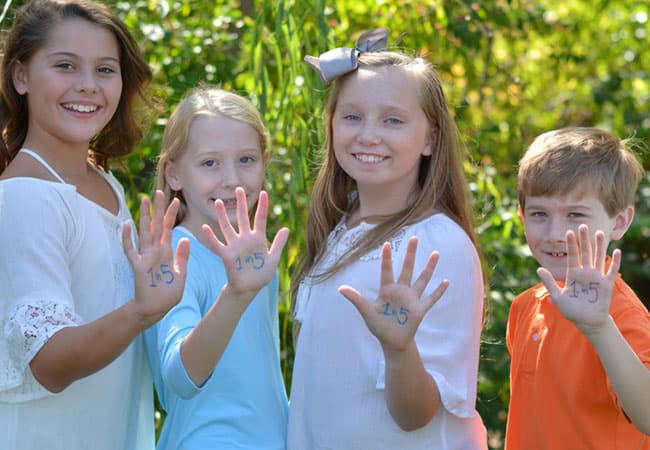22 Feb Struggling Young Learner? BUILD can help!
Did you just meet with your child’s teacher and they are concerned about your child’s reading, spelling, or writing? Were there red-flags on the dyslexia screeners? Are you wondering what to do or where to get help?
This time of year is big for dyslexia identification: it’s the time that screeners and grade cards are coming to parents. Research shows that the most successful intervention for reading and students with dyslexia should happen by age nine. Many times we wait too long to provide systematic and explicit intervention for students with dyslexia. Many students need multi-sensory instruction and dyslexia therapy provided by an expert in dyslexia. The good news is, Springfield Center for Dyslexia and Learning (SCDL) can help!
Many previous programs were tailored to students that are older than seven and might not be the best fit for students in kindergarten and first grade. The Luke Waites Center for Dyslexia and Learning Disorder at Scottish Rite for Children recently introduced a new curriculum called BUILD. SCDL offers this curriculum to our younger students as early intervention. It is a new addition to the ideas of Take Flight curriculum and materials, and is made especially for our little learners. Your child will get a jump start on the Take Flight curriculum with tutoring provided by a CALP (certified academic language practitioner or CALT (certified academic language therapist).

Here is a description of BUILD from Scottish Rite and the Springfield Center for Dyslexia and Learning:
“To meet the needs of the K-1 students who have been identified at risk for dyslexia, the staff of the Luke Waites Center for Dyslexia and Learning Disorders at Scottish Rite for Children has developed a 100-lesson reading intervention called BUILD: A K-1 Early Reading Intervention. BUILD is a small group intervention that addresses five specific components of reading intervention. Each component is taught developmentally using a direct, systematic, cumulative, multisensory method of introduction and practice to meet the specific needs of Kindergarten and first-grade students struggling in reading.
THE FIVE COMPONENTS ARE:
- Alphabet: The identification of letters, sequencing skills, and alphabetizing.
- Letter/sound knowledge: The direct instruction of individual letters and sounds, leading to the practice of reading words and sentences.
- Phonological awareness: The explicit introduction of the relationships between speech-sound production, from rhyme to spelling.
- Vocabulary: The direct teaching of strategies using context clues to infer the meaning of unfamiliar words.
- Comprehension: The explicit teaching of specific learning strategies used to identify the basic components of a story.” (Scottish Rite for Children 2022)
Each of the components of BUILD are essential for our young readers. Many of these components are not explicitly taught in the classroom. There is so much to teach in today’s schools that many skills are not covered or practiced as much as our students need. Coming from ten years of experience in the kindergarten through second grade classrooms, your child will not get this kind of systematic and explicit instruction in the classroom or even through most intervention groups.
BUILD directly teaches the alphabet. Students will not learn the alphabet song, they will learn to identify uppercase and lowercase letters in sequence and isolation as well as alphabetical order. They will learn to write their letters in upper and lower case through a multisensory approach. They will gain letter/sound knowledge through practice with letter names and keywords to help them remember letter sounds. Students will also practice blending and unblending to make words. Students will learn phonological awareness relating to speech sound production and practice rhyming. They will be taught vocabulary and comprehension in detail. The task of summarizing will be taught systematically from the first lesson. Each of the components will be taught systematically for students that need extra help learning the foundations of reading. This alleviates gaps in students’ foundational reading knowledge and levels the playing field for them to catch up and learn with their peers.
Is your child bright and inquisitive? Do they love hands-on learning and are very creative? Are they struggling to learn their letters, sounds, and sight words more so than their peers? Have you read to them every night since they were a baby and now you are bribing them to do their reading homework because they don’t like reading? Have you practiced their spelling and sight words every night but they still don’t know them? Is your child’s teacher saying, “ Just give them time, they will catch up”?
Can I tell you what I would suggest as a teacher of ten years and now dyslexia tutor? I would tell you that one out of five students can be dyslexic. Dyslexic students are brilliant and bright but need extra help to learn to read in a different way. Dyslexia is a learning difference and can be helped by different learning opportunities provided by curriculum and experts for students with dyslexia. The sooner a student is given intervention for dyslexia the better chance they have of catching up with their peers. BUILD is the opportunity for this to happen early! Give SCDL a call to find out more and to give your child the opportunity to show you how brilliant they are!
Did you know dyslexia screeners are required in Missouri? Per DESE, “Assessments will be administered to students in Grades 1-3 within the first 30 school days of the school year and to kindergarten by January 31 as recommended by the Department of Elementary and Secondary Education.” These screeners and grade cards might leave you, as a parent, with many questions and maybe some concerns. Many students are red flagged for signs of Dyslexia but Missouri schools do not diagnose or provide interventions specifically for dyslexia. Many parents are told to give their child more time and that they will catch up.

